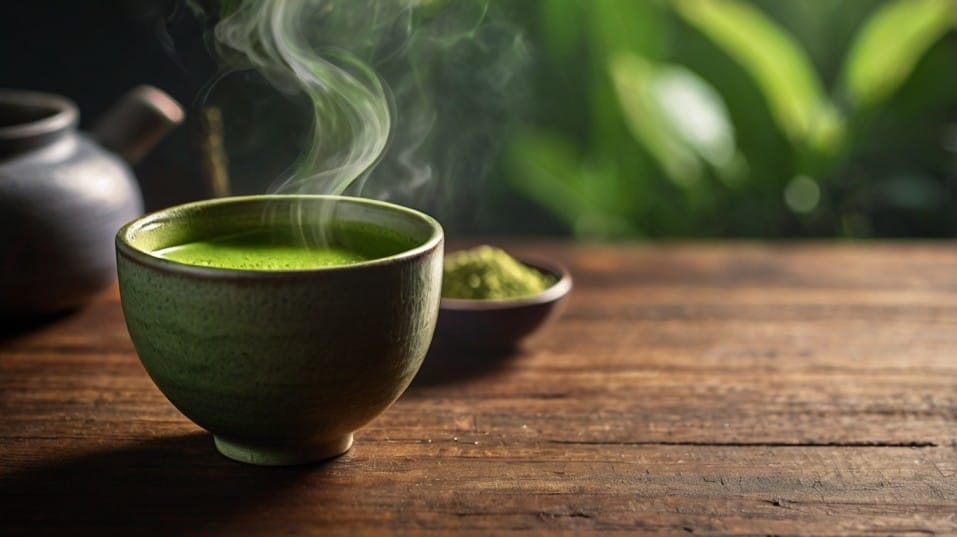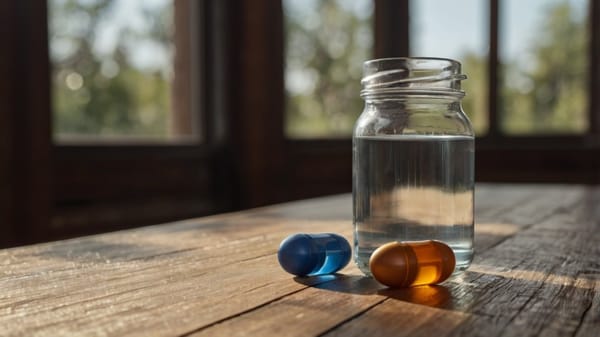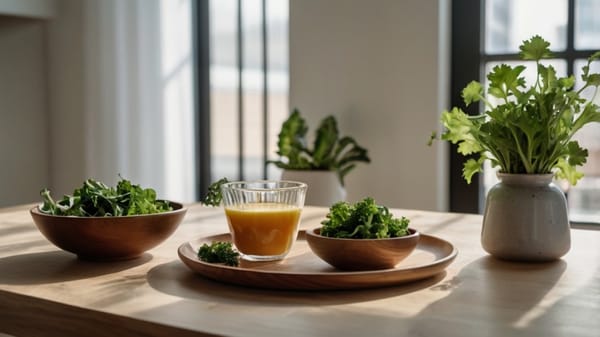Matcha Green Tea Is Trending—But What Does It Actually Do?
Matcha offers calm energy, focus, and metabolism support—all without the crash. Here’s how to make it part of your daily upgrade.

Ever wonder why matcha has suddenly taken over morning routines everywhere? It’s not just the color—it’s what it does that’s turning heads.
If your coffee isn’t cutting it anymore and you're looking for a smoother, smarter lift, matcha could be your secret weapon.
This vibrant green powder delivers calm energy, sharper focus, and even a boost to your metabolism. And the best part? It works quietly in the background—no jitters, no crash, just clean momentum.
What Makes Matcha Different from Regular Green Tea?
You’ve probably heard that green tea is healthy. But matcha is not just green tea—it’s the whole tea leaf, ground into a fine powder.
That means you’re getting all the compounds, not just the ones that steep into your cup. The result? More antioxidants, more L-theanine, and more focused energy per serving.
The flavor is richer and earthier than regular tea. The effects? Much more noticeable.

Energy Without the Crash
Matcha contains caffeine—about 60 to 70 mg per serving. But here’s the trick: it also contains L-theanine, a compound that balances the buzz and slows the absorption of caffeine.
That means no jitters, no sudden spikes, and no crash an hour later.
You’ll feel:
- Calm but alert
- Focused without feeling tense
- Energized in a clean, sustainable way
This isn’t hype. It’s what caffeine was meant to feel like—a calm state of mental readiness.
Mental Clarity That Lasts
Brain fog doesn’t announce itself—it just shows up one day. You’re reading the same sentence five times. Forgetting names. Struggling to concentrate. Matcha helps you tighten things up.
The L-theanine + caffeine combo has been shown to boost attention, memory, and reaction time—ideal for anyone looking to stay sharp and mentally agile. Add in matcha’s antioxidant load, and you’re giving your brain a real assist.
It’s not just about staying awake—it’s about thinking clearly and responding faster.
A Metabolism Kickstart—Without the Gimmicks
Let’s be real: most “metabolism boosters” are all talk. Matcha actually delivers.
Thanks to a powerful antioxidant called EGCG (epigallocatechin gallate), matcha may help increase fat oxidation and improve metabolic efficiency—especially when paired with regular movement.
This isn’t about miracle weight loss. It’s about making your body work smarter.
You’re not relying on stimulants or sketchy pills. You’re drinking a natural, clean compound that helps support your system over time.
Easy on the Gut—and Actually Good for It
Coffee doesn’t sit well with everyone. It can be acidic, irritating, or just too intense. Matcha, on the other hand, is:
- Naturally alkalizing
- Gentle on the stomach
- Packed with antioxidants that help protect gut lining
Even better? Matcha supports the gut-brain axis, helping reduce stress and inflammation in ways that can calm both your stomach and your mind. That’s a win-win.
If you’ve ever had to choose between focus and comfort, matcha lets you have both.
Best Times to Drink Matcha
Timing matters. Here’s how to get the most out of matcha:
- Morning: Replace your first cup of coffee with matcha. You’ll still feel awake, but smoother and more in control.
- Mid-morning or early afternoon: When focus starts to fade, matcha helps pull you back in.
- Before mentally demanding work: Try it 30–60 minutes before writing, meetings, driving, or anything that needs your full attention.
Avoid drinking it in the evening unless you're used to caffeine late in the day. But for most people, matcha becomes a daily rhythm, not a one-time boost.
What to Pair Matcha With (Optional Stacks)
Matcha works great on its own—but it also stacks well with a few beginner-friendly supplements to elevate its effects even more:
- L-Theanine: While matcha already contains some, an extra 100–200 mg enhances the calm focus effect.
- Lion’s Mane Mushroom: A brain-supporting nootropic that complements matcha’s mental clarity.
- Collagen Powder: Adds joint, skin, and gut health benefits. Plus, it blends nicely into a matcha latte.
Keep it simple. These stacks are optional. But if you're already taking them, they fit right in.
How to Make Matcha Without the Fuss
You don’t need a ceremony. You don’t need a bamboo whisk. You just need good matcha powder and a way to stir it.
Here’s your 60-second method:
- Add 1/2 to 1 teaspoon of ceremonial-grade matcha to a mug or shaker bottle.
- Pour in hot water (160–175°F—don’t boil it).
- Stir briskly with a spoon or shake it up.
- Add almond or oat milk if you like a creamy texture.
That’s it. No sugar. No syrup. Just clean, functional fuel.
What to Look for When Buying Matcha
Not all matcha is equal. Here’s how to find the good stuff:
- Ceremonial grade: Best taste and quality for drinking.
- Bright green color: Faded or dull green usually means it’s lower quality or oxidized.
- Single-origin or Japanese-sourced: Japan produces the cleanest, most effective matcha.
- No added sugar or fillers: Pure matcha should only have one ingredient.
You don’t need a fancy brand—just clean, potent powder.
Final Thoughts: Why Matcha Works
Matcha isn’t hype. It’s not just for wellness blogs or smoothie bowls. It’s a practical, daily tool that supports your energy, focus, metabolism, and mood—all in one simple ritual.
You’re not chasing another caffeine high. You’re investing in calm focus, mental clarity, and better balance throughout your day.
Start now: Pick up a ceremonial-grade matcha and swap it for your morning coffee. Give it three days. Feel the difference in your mood, focus, and digestion.
You’ve got goals. Matcha helps you move toward them—clear-headed and fully present.




